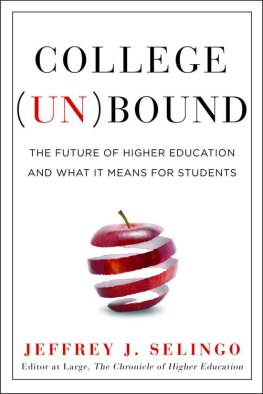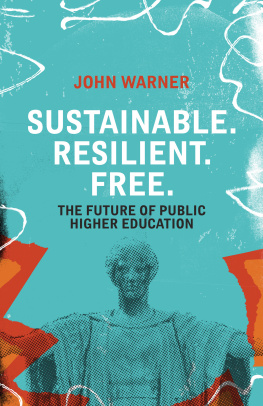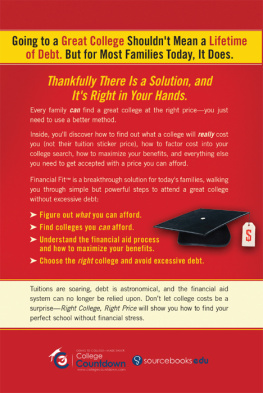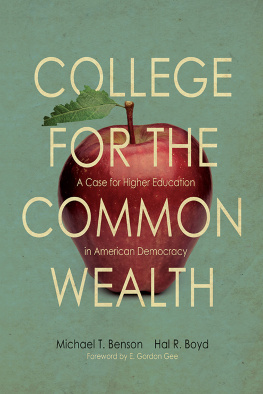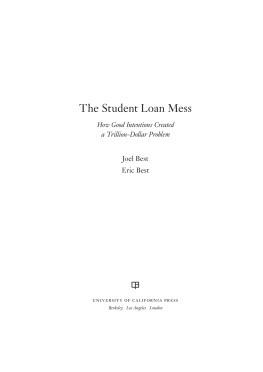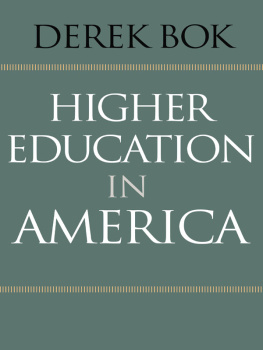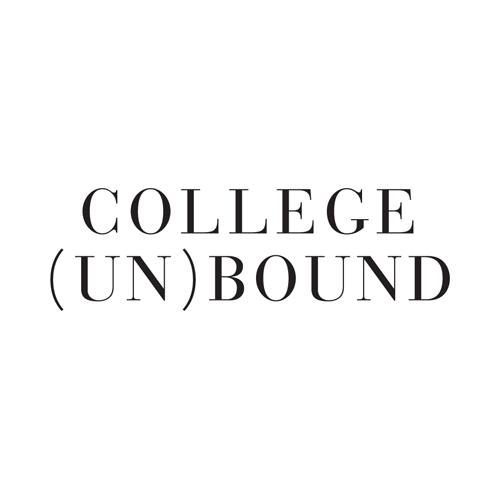

For Hadley and Rory, and their future
Copyright 2013 by Jeffrey J. Selingo
All rights reserved
This edition published by special arrangement with Amazon Publishing
For information about permission to reproduce selections from this book, write to Permissions, Houghton Mifflin Harcourt Publishing Company, 215 Park Avenue South, New York, New York 10003.
www.hmhbooks.com
Library of Congress Cataloging-in-Publication Data is available.
ISBN 978-0-544-02707-7
DOC 10 9 8 7 6 5 4 3 2 1
Some material in this book has appeared, in slightly different form, in the Chronicle of Higher Education.
CONTENTS
INTRODUCTION
Bernardsville is an affluent village of nineteenth-century colonial homes, a small town center, and modern strip malls located in northern New Jersey, just thirty-five miles from midtown Manhattan. Its the type of American bedroom community where the college-educated settle, start families, watch their children grow up on the town ball fields, and then send them off to college after graduation from Bernards High School.
With a rich selection of Advanced Placement courses and the exclusive two-year International Baccalaureate curriculum, the 750-student high school is often ranked among the best public schools in the state. In the fall of 2005, Samantha Dietz entered her senior year at Bernards. She was a member of the debate club, Harvard Model Congress, and worked for the student newspaper. She took Advanced Placement psychology, as well as several International Baccalaureate courses, including English, French, and environmental science. She maintained a 3.9 grade-point average. And like almost all of her senior class, she was bound for college the following fall.
Dietz would be the first in her family to go to college. Her parents had solid jobs in technology, despite having only high-school diplomas. They didnt push her to go to college, but Dietzs teachers and guidance counselors did, especially to four-year colleges. She applied to more than half a dozen schools: Rutgers University, Drew University, Fairleigh Dickinson University in New Jersey; Hofstra University in New York; and Allegheny College and Bucknell University in Pennsylvania. She was accepted to all but Bucknell, where she was put on the wait list.
When decision time came in the spring, Dietz closely examined the financial-aid offers from each of the colleges. For her, the choice would be strictly about the bottom line. Fairleigh Dickinson offered her the most financial aid, nearly all of it in grants that wouldnt have to be paid back. Its campus was about twenty minutes away, so she could live at home and save on room and board. With Fairleigh Dickinsons financial package, Dietzs tuition bill would be about half of the universitys $25,000 list price at the time. Her decision was easy.
What Dietz failed to examine was Fairleigh Dickinsons graduation rate. In 2006, only 38 percent of its students graduated within six years, a rate well below all of the other schools she had considered. The two other local schools on her list, Rutgers and Drew, graduated more than 70 percent of their students within six years. Though Fairleigh Dickinson was giving Dietz a boatload of money, her chances of emerging at the other end with a degree were pretty dismal.
Dietz took a full slate of classes her first semester. To pay tuition, she waitressed and helped manage a restaurant near her house. She worked twenty-five hours a week, mostly on nights and weekends. By Thanksgiving, I was exhausted. I had no downtime, she recalls. She was doing well in school, with mostly Bs in her classes. I felt like I was killing myself for nothing, Dietz says. This was money I could be saving and starting my life. I was managing a restaurant, handling finances and employees. I was learning a lot less about the real world in school and paying so much for it.
Toward the end of the semester, she received a letter from the university announcing that state funds to private colleges in New Jersey were at risk of being cut. It was a warning: She would likely need to pay even more the following fall.
So she dropped out of college.
The Dropout Crisis
For most of the twentieth century, the United States bragged that it had the best colleges and universities in the worldand rightfully so. Since the end of World War II, when colleges and universities threw open their doors to returning GIs, helping to create a vast middle class that defined a generation, these institutions have been the envy of the world and a symbol of American greatness. They attracted the most talented students from other countries, and graduated young Americans who were the best educated in the world.
Not anymore. Over the last thirty yearsand particularly in the first decade of the new millenniumAmerican higher education has lost its way. At the very top, the most elite and prestigious institutions remain the bestthe world still clamors to get into Harvard, Princeton, Yale, Berkeley, Stanford, Amherst, Williams, and a few dozen other household brands.
As the baby boomer generation leaves the workforce, the country risks having successive generations less educated than the ones that preceded them for the first time.
Such trends carry significant economic risks for the United States. For every dollar earned by college graduates, those who drop out without a degree earn sixty-seven cents. Since the turn of the century, average wages for high-school graduateswho today make up about half of the adult populationhave fallen considerably to just over $19,000, below the federal poverty level for a family of four. Nothing short of winning the lottery helps ensure a young person will achieve the American dream quite like a college degree. A four-year college credential is the best ticketand perhaps the only ticketfor kids from the poorest families to get ahead. For children from families at higher income levels (defined as $61,000 and above), a degree helps them make it to the top themselves.
In 2010, four years after Dietz quit Fairleigh Dickinson, she signed up for a class at nearby Raritan Valley Community College. Since then, she has taken one class a semester, paying about $500 a course. She wishes her counselors in high school had encouraged her to consider community college, instead of mocking two-year institutions as places for students who couldnt hack it on a four-year campus.
Now, Dietz is twenty-four years old and working for a real estate company. Her job doesnt require a degree, but she thinks shell eventually get one. She has heard the statistics on the long-term payoff of a degree, but for the moment Dietz feels she is better off than many of her high-school friends who went to college. They graduated and are in worse situations, she says. They are back to waitressing or nannying, not doing anything with their degree. They are living at home and in tons of debt. Im in a much better situation.
A Risk-Averse, Self-Satisfied Industry
American higher education is broken.
Change comes very slowly to higher education. Many institutions in the United States were established more than two centuries ago, with a handful dating back to the days before the American Revolution. Tradition is important at these colleges. A confluence of eventsflagging state support for public colleges, huge federal budget deficits, and falling household incomenow makes it necessary to consider new approaches.
Next page
